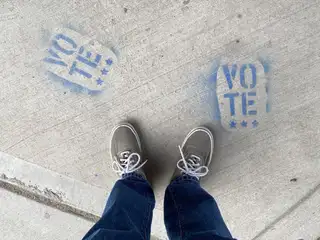
Why Small Businesses Should Shun Black Friday — and How
Black Friday is almost here again. And it’s getting crazier by the year. Here are some reasons why you should ignore the most dangerous shopping day of the year, and advice for those who can’t.
Every year on the news, we’re told how Americans (and increasingly also people around the world) set new spending records over the Black Friday weekend. It’s in the tens of billions of dollars, just in the US.
No wonder small businesses keep jumping into the fray with their own offers, ads, and stunts. Who wouldn’t want a piece of that pie?
It’s clear that they think it’s a great opportunity to bring in some extra sales.
It’s not so clear, however, that they’re right.
For huge retailers, like Amazon, Target and Walmart, with huge marketing budgets, huge sales volumes, and sophisticated models and tools to make sales projections, Black Friday might make sense.
For smaller businesses, however — whether online or brick and mortar — Black Friday might be as much of a curse as a blessing. It may just cost you more than you’re getting out of it.
1. Black Friday cannibalizes your holiday sales
Black Friday kicks off the holiday shopping spree, leading up to Christmas. This period is typically when people spend the most money shopping, and they expect to splurge. They may still be price conscious, but they also have a lot of stuff they need to buy–on a deadline.
It’s not unreasonable to assume that some percentage of people who take advantage of your Black Friday offer would have bought anyway, regardless of price. Giving people a huge discount before they’ve even had a chance to consider paying the full price, seems like madness.
You may want to ask yourself whether getting the bargain hunters as well, is worth giving everyone a discount.
2. Steep discounts are dangerous
Black Friday offers are the worst kind of price dumping. 25% Off! 30% Discount! Half price!
When you lower the price far below what the sticker says, you’re changing people’s perception of the value of your offer, and you are implying that price is an important quality of what you’re selling.
Very few people will think you’re actually losing money (even if you do). Instead, they’ll assume that the original price is artificially high, and is only for people who don’t know better or simply can’t wait for the next sale.
Naturally, they’ll be less likely to buy from you at the full price, and more likely to postpone their purchases.
3. Profitability is questionable at best
Presumably, your prices were set at the current level for a reason.
You probably considered more than just what people are willing to pay, but also things like variable and fixed costs, and what a reasonable profit margin would be.
Hopefully, you also added some wiggle room for sales campaigns, so you’ll at least cover cost and a little extra, even after the Black Friday discounts. But have you really done the math?
How much do you have to sell at Black Friday prices, to recover a reasonable share of your fixed costs? And how much extra do you have to sell, to recoup the costs for advertising your Black Friday offers?
4. Stunt marketing is reckless
Small businesses are not just scaled-down versions of large companies, and Black Friday is a good example of that.
While a big-box retailer may have the brand presence and sales volume to justify an expensive Black Friday event and ad campaign, it is borderline reckless for a small store to spend any significant time, money, and resources on a campaign that’s only good for one long weekend each year — maybe a week and a half if you’re good.
Good marketing works 365 days a year — year after year.
If you want to succeed in the long run, it’s better to spend your limited time and money in something that generates sales every day, even when you’re not running a campaign for Black Friday — nor Cyber Monday, Halloween, International Women’s Day, First Day of School, or any other single day.
There are countless things you can invest in to do that. Start there.
5. Competition is worst on Black Friday
There are some advantages to everyone yelling about Black Friday all at once. People know what to expect, and they will be looking for good deals from you.
However, that also causes problems. It’s hard to get people’s attention through all the noise, and your offers need to truly exceptional to really set you apart from the competition.
Also, going into and through Thanksgiving Day weekend, demand for ad space is higher. If you’re not seeing the price of advertising go up in response, that probably means the quality of your audience is going down.
So what can you do?
If you think you can get away with ignoring Black Friday, you should definitely consider it.
Unfortunately, that’s much easier said than done. In some industries, you’re expected to make a big deal out of Black Friday, and failing to do so will be frowned upon.
If you wish you could ignore Black Friday, but don’t think you can, here’s some advice:
Craft your Black Friday offers carefully
Make absolutely sure that you’re not losing money on each sale. Ideally, you should be making a nice profit — if not immediately, then down the line — even if your customers feel like they’re getting great deals.
Make sure that your offers don’t undermine the perceived value of your product by just cutting prices. Here are some examples of deals that may actually boost the perceived value, instead:
- Offers that customers feel like they deserve. E.g. Rewards to loyal customers, or for enlisting a friend.
- Offers that are exclusive, and not available to everyone. E.g. Extend your offer only to people in a certain group, or winners of a competition.
- Offers framed in terms of getting more, not paying less. E.g. “buy X, get Y” or “Pay for X, get upgraded to X Plus.” (Be careful with this one. It’s important to get the language right.)
Offers like these can be combined, but should still be used sparingly.
Ideally, your every-day value proposition should be enticing enough to people without discounts. If it’s not, you might want to revisit your marketing strategy.
Plan the follow-up
Put some thought into how you can get your Black Friday customers to come back for more later. Or at least how you can get permission and opportunity to stay in touch.
At the very least, give them a loyalty card, ask them to subscribe to your newsletter, or to follow you in social media. But if you can step it up, do.
If you have a great deal on vacuum cleaners, for example, give your customers the opportunity to subscribe to vacuum bags, ask them for permission to send future offers when they register for the warranty, or offer a bonus they have to redeem online.
When done right, you can turn a one-time discount into a profitable long-term relationship.
Do a minimum of marketing
Once you’ve come up with an offer you think will be good for both your customers and yourself, and you’ve made a plan for how to follow up after the sale, you need to make an honest effort to promote your offer.
Chances are, however, that your margins are pretty slim at this point, so it’s important to keep the costs in check.
This is not the best time to spend a lot of time and money on creative design processes or reinventing your advertising. You just want to get the message out. Effectively and on brand, of course, but otherwise as simply as possible.
Don’t overthink it. Use ready-made design templates, and clear, straight-forward language where you can. If you’ve run Black Friday campaigns before, don’t think twice about reusing that collateral — making only necessary updates and improvements to the key information (like the dates and the details of the offer).
Do a quality check and get someone to proofread, but don’t fret the nuances of the language or the small details. Small things can make a big difference in the long run — less so over a short week.
Plan ahead
Whereas large chains and big-box retailers start planning for Black Friday many months, possibly even a full year in advance, too many small businesses seem to be caught off-guard by the sudden appearance of Black Friday on their calendar. They only start thinking about it when there’s only a week or two left.
Typically, however, the earlier you start planning, the better off you are. Your planning and execution will be many times better and more cost-effective when you don’t have to rush, and that will show in your results.
Besides, when the actual holiday weekend gets closer, everyone usually has more than enough to do. And there are enough little things — like decorating the store, making last-minute changes, and publishing the campaign on the website — that can’t be done too far in advance.
So even though you’re keeping it simple, everything that can be prepared ahead of time — e-mails, ads, landing pages, social media posts, etc. — should be ready at least a week before you need it, and scheduled to go live at the right time.
Plan on recycling
Your Black Friday campaign will have a very limited lifespan, but a lot of the work and planning you’ve put into it, and the knowledge you’ve gleaned, can be valuable later on.
The systems, templates, and lessons you’ve learned can be recycled, with some small and relevant changes, the next time everyone expects you to make a grand commercial gesture.
After all, when you’re finally done not ignoring Black Friday, there are only a few short months until you can no longer ignore Valentine’s Day.
But first, have a great Friday, when it comes.
A version of this post first appeared in Norwegian on Papaya.no.



